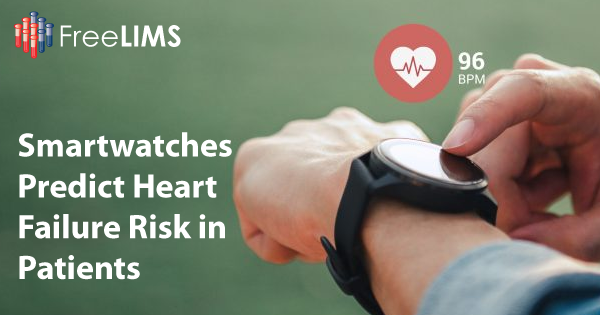
Researchers Find Smartwatches May Predict Risk of Heart Failure in Patients
Date: April 10 2023
Source: www.news9live.com
Smartwatches and other wearable gadgets may be used to predict a higher risk of developing heart failure and irregular heartbeats in later life
According to a recent study conducted by UCL researchers, wearable gadgets like smartwatches may be able to predict who is more likely to get heart failure and irregular heartbeats later in life. The peer-reviewed study, which was released in The European Heart Journal – Digital Health, examined data from 83,000 patients who had an electrocardiogram (ECG) for 15 seconds, a similar procedure to those done on phones and smartwatches.
The researchers discovered ECG records with additional heartbeats, which are often benign but can be indicative of cardiac failure and arrhythmia if they happen frequently (irregular heartbeats).
In this brief recording, they discovered that persons with an additional beat (one in 25 of the total) had a doubled chance of having heart failure or an irregular heartbeat (atrial fibrillation) during the following ten years.
Those in the 50 to 70 age range without a known cardiovascular illness provided the ECG recordings that were analysed.
When the heart pump is compromised, there is heart failure. Many times, it cannot be cured. Atrial fibrillation is characterised by an irregular and frequently excessively high heart rate brought on by the abrupt onset of aberrant electrical impulses in the upper chambers of the heart (atria). It can be fatal, resulting in issues including fatigue, shortness of breath, and dizziness, and is associated with a fivefold greater risk of stroke.
ECGs from consumer-grade wearable devices may help with the early identification and prevention of future heart illness, according to the study’s principal investigator, Dr Michele Orini of the University College London Institute of Cardiovascular Science.
The following stage is to research the most effective practical methods for screening people utilising wearables. A more accurate estimate of population risk and a decrease in the burden of these illnesses might result from combining such screening with the use of artificial intelligence and other computer techniques to swiftly detect the ECGs indicating increased risk, as we did in our study.
The study’s senior author, Professor Pier D. Lambiase of the UCL Institute of Cardiovascular Science and the Barts Heart Centre of the Barts NHS Health Trust stated: Being able to recognise those who are at risk of heart failure and arrhythmia at an early stage would mean that we could assess higher-risk cases more effectively and help to prevent cases by starting treatment early and giving lifestyle advice about the significance of routine, moderate exercise and diet,” said the study’s lead author.
Sensors affixed to the skin are used in an ECG to detect the electrical impulses the heart pumps out each time. In clinical settings, at least 10 sensors are positioned all over the body, and the recordings are examined by a specialised physician to check for any indications of a potential issue. Consumer-grade wearables are less burdensome but may be less precise since they rely on two sensors (single-lead) contained in a single device.
In order to find recordings with additional beats for the new study, the research team employed machine learning and an automated computer application. Premature ventricular contractions (PVCs), which originate from the lower chambers of the heart, or premature atrial contractions (PACs), which originate from the upper chambers, were the two categories assigned to these additional beats.
Two experts then checked the recordings that had been classified as having additional beats, as well as a few recordings that weren’t, to make sure the categorization was accurate.
First, the researchers examined data from 54,016 UK Biobank project participants, with a median age of 58, whose health was monitored for an average of 11.5 years following the recording of their ECG. They next examined a second set of 29,324 patients, with a median age of 64 and 3.5 years of follow-up.
The researchers discovered that an extra heartbeat from the top chambers (atria) was linked to a twofold increase in cases of atrial fibrillation, while an extra beat from the lower chambers (myocardium) was linked to a twofold increase in later heart failure after adjusting for potentially confounding variables like age and medication use.

